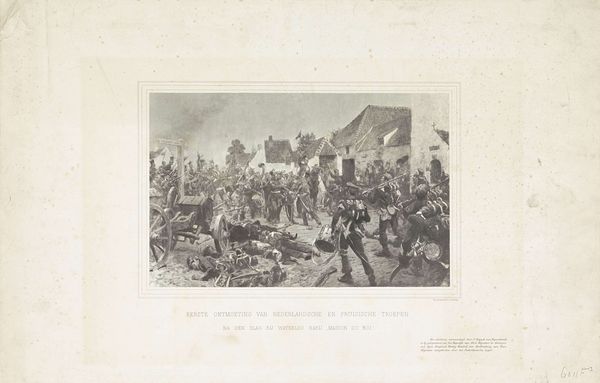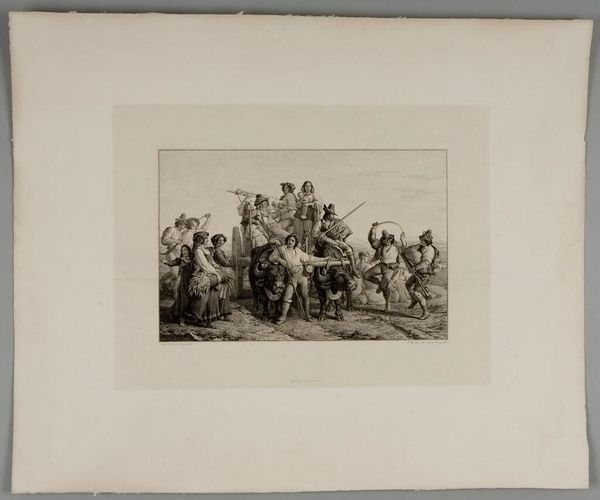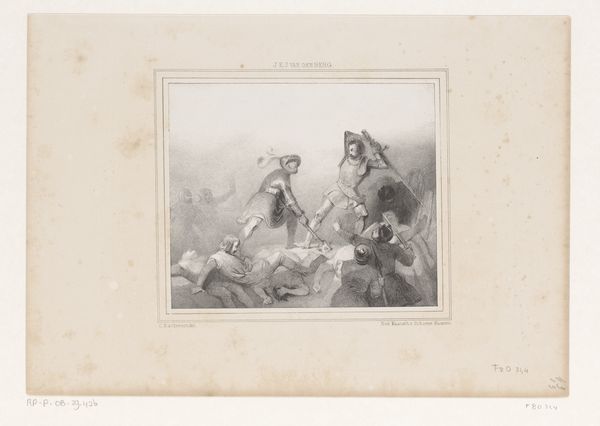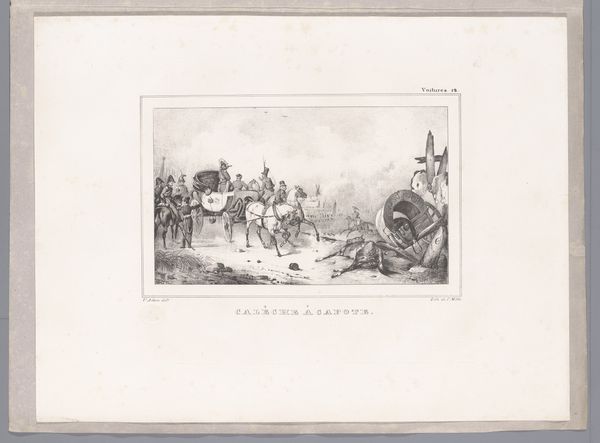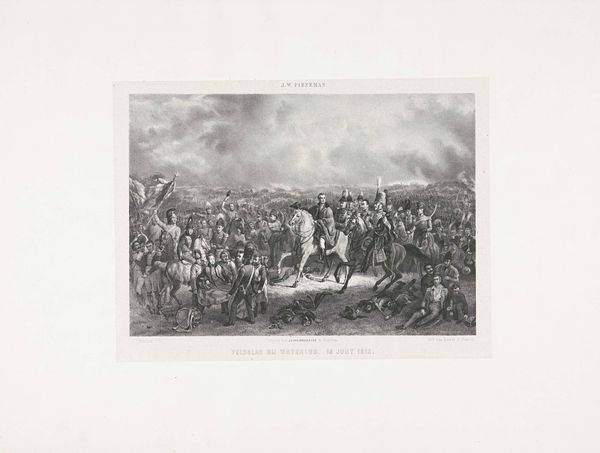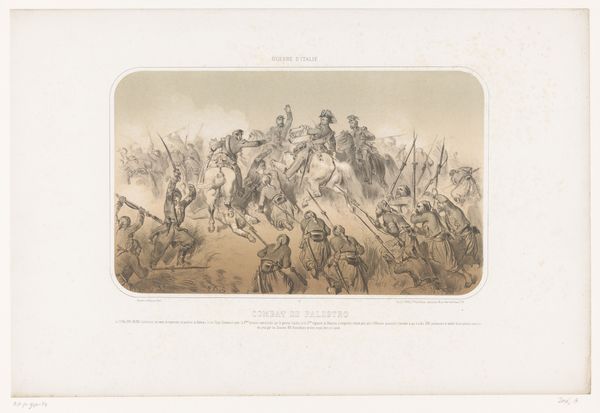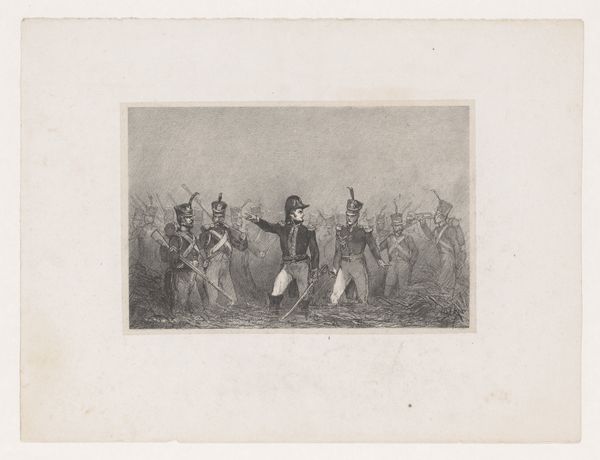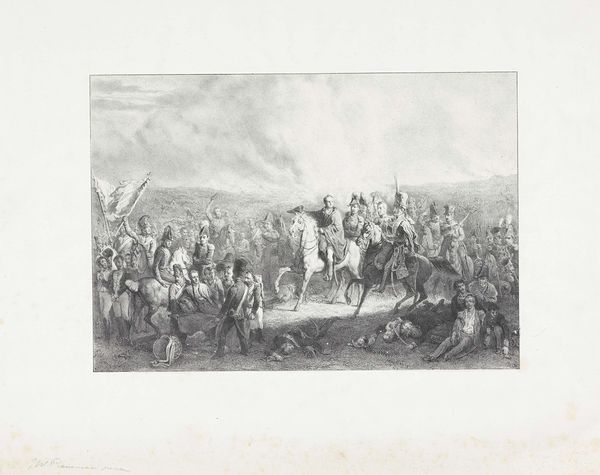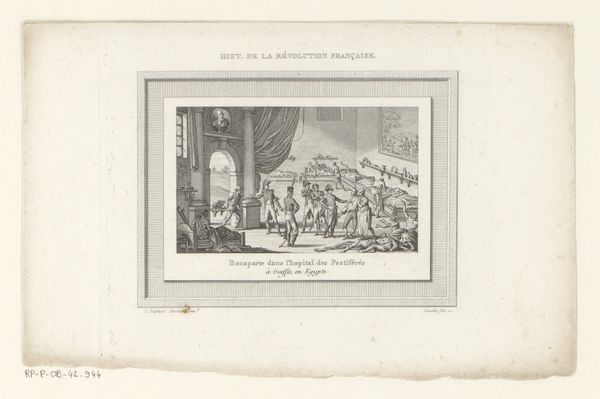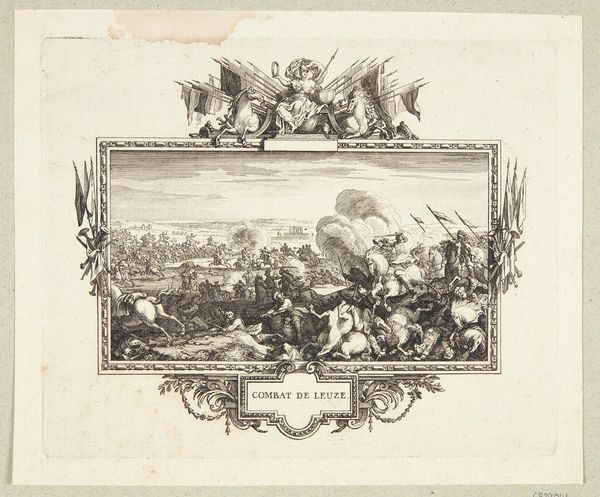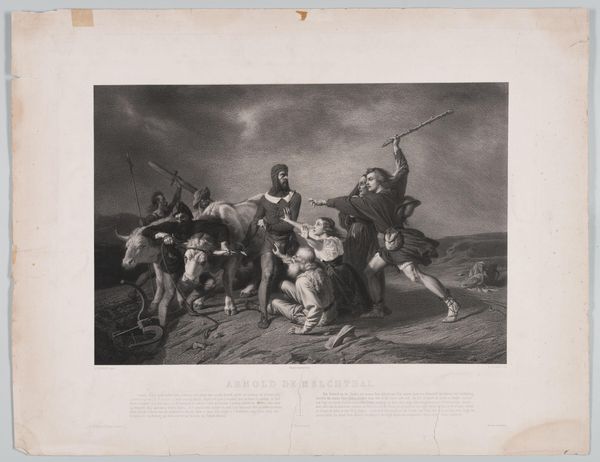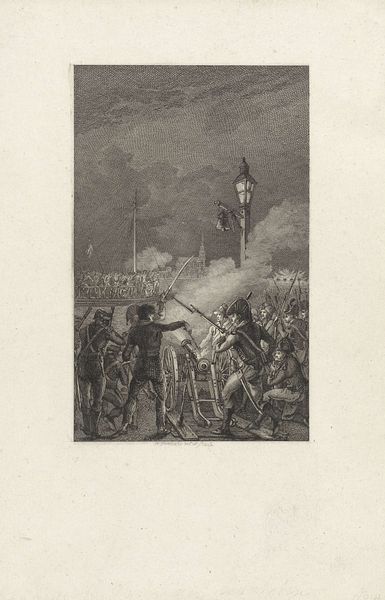
print, engraving
#
narrative-art
# print
#
genre-painting
#
history-painting
#
engraving
#
realism
Dimensions: height 535 mm, width 705 mm
Copyright: Rijks Museum: Open Domain
Curator: Here we have Carel Christiaan Antony Last’s print, “Strijd van de geuzen, 1566,” dating from 1830-1876. It's an engraving, currently residing in the Rijksmuseum. Editor: My immediate impression is one of turmoil, albeit captured in a rather formal style. The monochrome rendering and carefully constructed composition lends a certain gravity, despite the evident chaos of the scene depicted. Curator: The formal composition is indeed quite remarkable. The artist uses strong diagonals and chiaroscuro to draw the eye. Observe how the figures are arranged, creating a dynamic yet balanced tableau. Semiotically, the print operates through distinct contrasts: light versus shadow, movement versus stillness. These binary oppositions reinforce the drama inherent in the narrative. Editor: Absolutely, and I would argue that this dramatic rendering serves to highlight the complex political and religious tensions of the period. The “Geuzen,” or "beggars," were Calvinist rebels during the early stages of the Eighty Years’ War. To fully appreciate Last's piece, we must consider its historical context, situated amidst Dutch struggle for independence from Spanish rule, but also a Protestant attempt to break free of the Catholic-centered establishment of its time. Who are those people depicted on the artwork’s horizon? Curator: Precisely! The artist clearly aimed to depict a key moment of insurrection through strategic pictorial devices such as the gaze, posture, and grouping of subjects within the picture's frame, hence structuring meaning in very direct, powerful way. The horizon of people at a distance in fact serves a dual purpose of drawing your sightline to the far reaches of this event's meaning but also balancing the action presented to us in the foreground. Editor: Considering that Last created this engraving centuries after the actual events, what sociopolitical circumstances may have influenced his specific choices in representing the Geuzen? The print surely evokes a spirit of resistance and valor that undoubtedly resonated with 19th-century Dutch viewers facing their own social and political challenges. This visual translation clearly speaks volumes about the artist’s sympathies. Curator: Indeed. The artist has succeeded in using line and form to elicit not merely an image of conflict, but a compelling study of opposing wills. I think it's the formal arrangement of these elements in opposition that truly sells the artwork's feeling and vision. Editor: Ultimately, viewing art like this prompts us to delve deeper, not just into its aesthetics but also its cultural significance. Curator: A rewarding experience indeed!
Comments
No comments
Be the first to comment and join the conversation on the ultimate creative platform.
